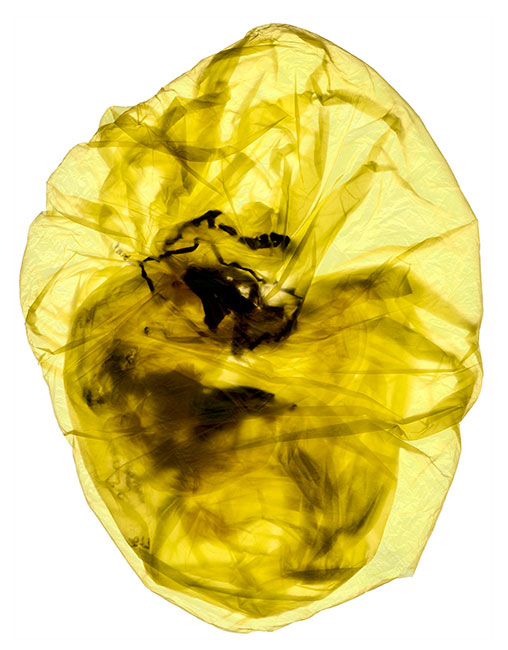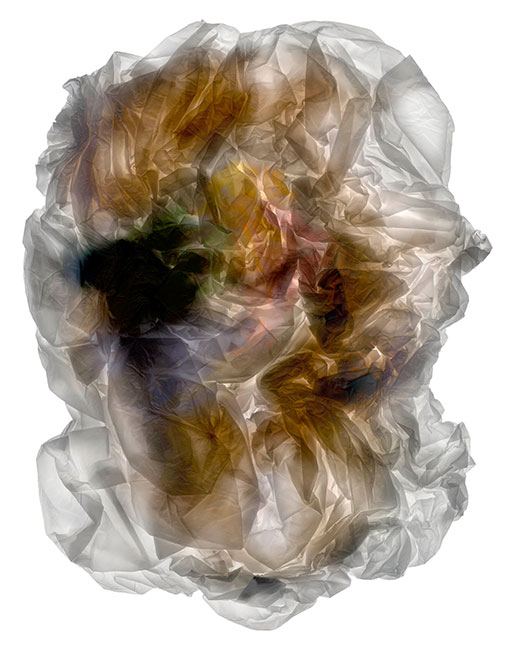- work •
- statement •
- reviews + essays •
- resume •
- contact
deankessmann
Plastic on Paper
archival pigment prints, various sizes, 2005
Small prints: edition of 3 (image approx. 5 x 4 inches, paper 18 x 13 inches)
Large prints: edition of 2 (image approx. 20 x 16 inches, paper 34 x 24 inches)
archival pigment prints, various sizes, 2005
Small prints: edition of 3
(image approx. 5 x 4 inches, paper 18 x 13 inches
Large prints: edition of 2
(image approx. 20 x 16 inches, paper 34 x 24 inches)
Read a short description of this project




























































Plastic on Paper
The images in this series document a relatively small selection of bags from a mound of plastic awaiting the recycling bin. This work is a reflection on a particular kind of quotidian object that permeates our everyday lives. These plastic bags have been transformed; they have been emptied, flattened, and shaped into fluid forms that hover within a depthless space. At first glance, they may resemble magnified biomorphic forms or other strangely familiar organisms. Perhaps they bring to mind medical imagery—test results converted into visual data. On the other hand, they are not unlike X-rays that appear and disappear on monitors at airport terminals—singular subjects placed under surveillance. In addition to these associations, if viewed from a less analytical or investigative perspective, these seemingly static records become ephemeral stains, fragile materials that defy gravitational forces and float above a milky white substance. These mundane objects illuminated from within by a radiant light turn out to be apparitions—visions that disappear as quickly as they come into view. The glowing shapes may be instantly recognized for what they are, a byproduct of our culture of production, consumption, and waste. When we leave a store after purchasing this merchandise that is going to make our lives so much better, we carry this stuff home in a carefully designed bag—the iconic reference to the act of shopping. Yet with a blink of an eye, these plastic bags will once again become something much more beautiful than what they just were, much more intriguing than the objects themselves.